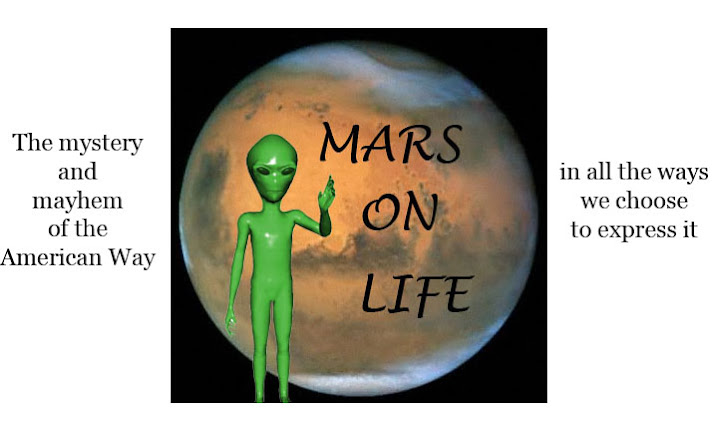
A few months after its semi-controversial début issue featured a Caucasian model flanked by two Indian ones, Vogue India is once again in the headlines. This time, there's a larger area of contention: the issue features an editorial spread of India's poor modeling designer accoutrements.
This unusual pairing has excited some statements from Vogue India that the poor (or the very poor in this case) should not be denied the right to aspire to luxury acquisition. Babbling about the "power of fashion," editor Priya Tanna issued the ridiculous explanation that one cannot take fashion too seriously.
What then, is the reader to think about poverty?
Imagine the same spread in American Vogue, but instead of featuring Indians in their colorful native garb we are given the rural homeless of Appalachia, toothless and doomed, or the poor blacks of the Mississippi Delta, scraping and scratching at the land and ultimately victims of our greatest modern plague.
We could pose them with the hottest totem items for fall, the "revolutionary extras" as picked by Candy Pratts Price. The fetal Hogan bag, a Galliano shoe with a heel covering like a sheaf of wheat (this might be modeled by a destitute farmer), a Luigi Scialanga brooch that looks like a cluster of lustrous bird bones but is probably coral (lovely for a fisherman who lost his livelihood in Katrina), and a glass-eye ring for someone unable to afford insurance for glaucoma.
Vogue India was pushing the envelope on that BRIC business. In case you haven't heard, America is being shoved to the side (or is doing the shoving herself) like a dowdy old cousin, somewhat senile, and definitely doddering. By 2050, who knows where she'll be? Probably wearing tatters while the BRIC ruling class is off on first-class suites to Antarctica, which has recently been enclosed in a tropical biosphere and is the hot new vacation destination and home to an underpaid serving class who are trucked in from Alabama and are thankful to have any job at all.
This is, according to Tanna, not a "political statement." Of course it isn't. There isn't much one can say about the politics of poverty relative to an umbrella that costs three years' wages. It's so far out as to be useless, and yet the bottom line is not, as Tanna suggests, the democracy of fashion. She means the democracy of luxury fashion, which is quite distinguishable from the native fashion of the uncredited models. Are we to suppose that the models might keep and enjoy such items without being aware of their worth on the open market? Were the models aware of the price tags, or are we to equate the distantly rural with the dim?
Vogue India is still, by association, Vogue, and yet is subject to a different set of values unique to its provenance. Still, this photoshoot leeches its color from the rich fabric of Vogue's US edition, a magazine that proudly hangs on to a false premise and pretends that the country isn't going to hell in a designer handbasket.
India houses a number of nouveau riche, who may well need the type of style arbitration Vogue provides. At the expense of the country's poor, however, the spread seems like a bad inside joke, almost like a case of "better thee than me." It's impossible to determine what Tanna might have intended: If we are to believe in the democracy of fashion line, then we must ruefully acknowledge obtuseness (which reinforces what many think of the fashion press anyway); if we think democracy is a cheap, hindsight excuse, uttered in the glare of critical spotlight, then we have to wonder if the shoot were cruelly deliberate. Neither is pretty.
Perhaps there is no correlation between the poor of America and the poor of India. The American poor have, for one thing, unphotogenic wardrobes. They have a fine tradition of desperate expression more suited to the governmental propaganda of the more socialistic aspects of the New Deal. They'd take the umbrella and sell it on eBay to buy a set of cheap teeth. The poor Indians in the spread look gay and worry-free, as if they might be characters in a movie (plot: a Birkin bag magically appears in an agrarian village, the bag the only colorized thing in a black-and-white film, causing the villagers inexplicable happiness away from the urban industrial chokehold. They dance and sing and eat rice with their fingers). Their expressions and bright garb marginalize the awful truth.
Let's blame Britain, per historical imperative, since Vogue India is getting away scot-free.
Monday, September 1, 2008
A Man Can Dream, Can't He?
Subscribe to:
Post Comments (Atom)









4 comments:
i love it when people dismiss fashion... 'one cannot take fashion too seriously?'
what a way to marginalize. perhaps it's a way to gain license to do what ever one pleases, after all it's all superficial? right?
Anonymous: That was a quote from the Vogue editor. Read the sentence again, please.
What a scary concept, clothing the poor in designer goods. I'm stunned. How on earth did anyone ever think this was a good idea?
I think, though, that in India, this juxtaposition between the super poor and the wealthy is not the huge one it is in the US or the UK.
Certainly in India, even a quick glance at Bollywood evinces this, there is a much more close proximity to the poor. The caste system is not defunct. Institutionalization of poverty and zero upward mobility is the norm for Dalits.
No one can begin to suggest that this imagery isn't a bit disgusting. It is also very typical of India's attitude right now. They are the inverse of the US's bogging economy. They can show hyperbole and spin it with optimism. They clearly don't see the corrupt infrastructure, nepotism (again look to Bollywood for a collection of crappy actors and actresses who happen to have the right last name, this is why Shahrukh Khan is pretty special - he's bucked the system. Don't kid yourself, he's also of the "right caste" and "right connections")
Indians are harsh. I've met a number living in India and the Middle East. For all the Hindu mellowness we import here to the west, there is a hungry middle and upper class that has to buck a few million people for a grasp of the brass ring. Competition on par with China and without the state helping the bottom wrung. Of course China's not doing much for their bottom wrung as they discover a taste for capitalism.
This does not surprise me, nor should it surprise the UK. For many years they marginalized India and Indians. Institutions reflect their British ancestry, Indians do as well. Speaking English, good schools, upward mobility, NRIs, the list is long, and the foot of the west is still in India, just as India has its foot in the western culture.
Post a Comment